Enchanting Istanbul: A Historical Odyssey
Embark on a captivating journey through Istanbul's rich history and stunning architecture on this free walking tour, where every step reveals a new story.
Time
3 Hours
Stops
9 Places
Distance
3.1 km
Sultanahmet Square
Begin your journey at Sultanahmet Square, the heart of Istanbul's historic peninsula, surrounded by iconic landmarks and steeped in the city's rich history.
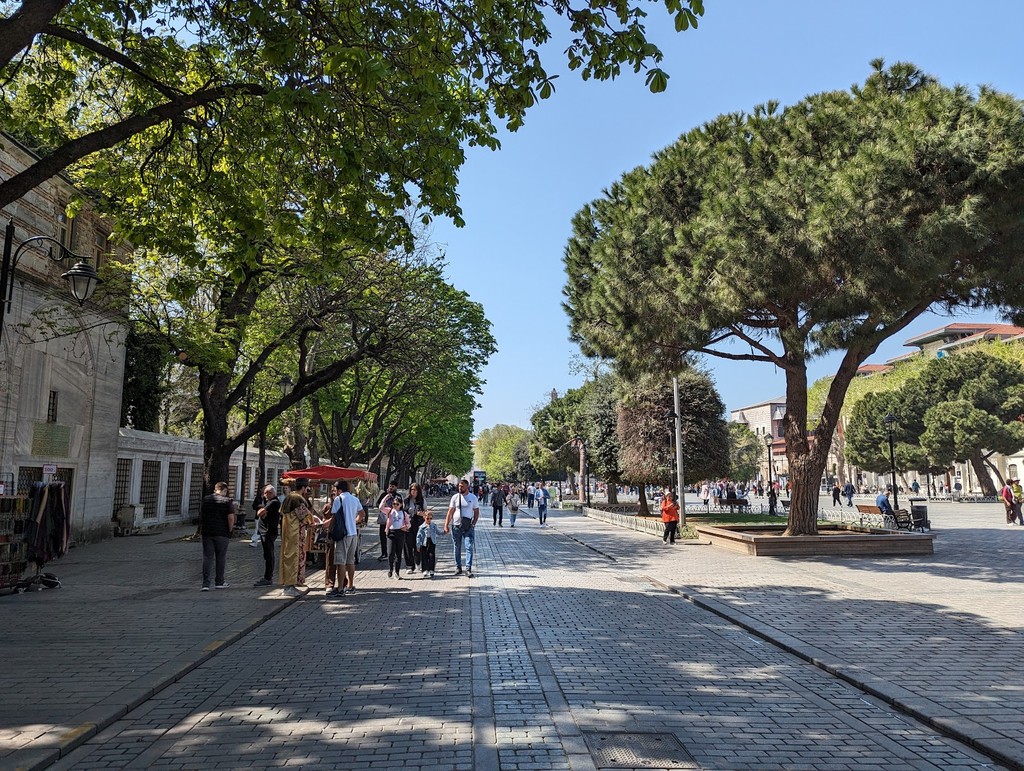
Sultanahmet Square (Source: Google Maps)
Sultanahmet Square is the vibrant heart of Istanbul's historic peninsula, surrounded by remarkable landmarks such as the Hagia Sophia and the Blue Mosque. This square has been a central gathering place since Byzantine times, serving as a focal point for social and political activities. Its expansive open space offers stunning views of the surrounding architecture, making it a perfect starting point for exploring the rich history of the city. The square embodies centuries of cultural exchange and has witnessed numerous historical events, from the Byzantine Empire to the Ottoman period. As you stand in the square, you can feel the echoes of the past and envision the bustling life that once thrived here.
Blue Mosque (Sultan Ahmed Mosque)
Located opposite the Hagia Sophia, the Blue Mosque is renowned for its stunning blue tiles and impressive domes, offering a serene atmosphere for reflection.
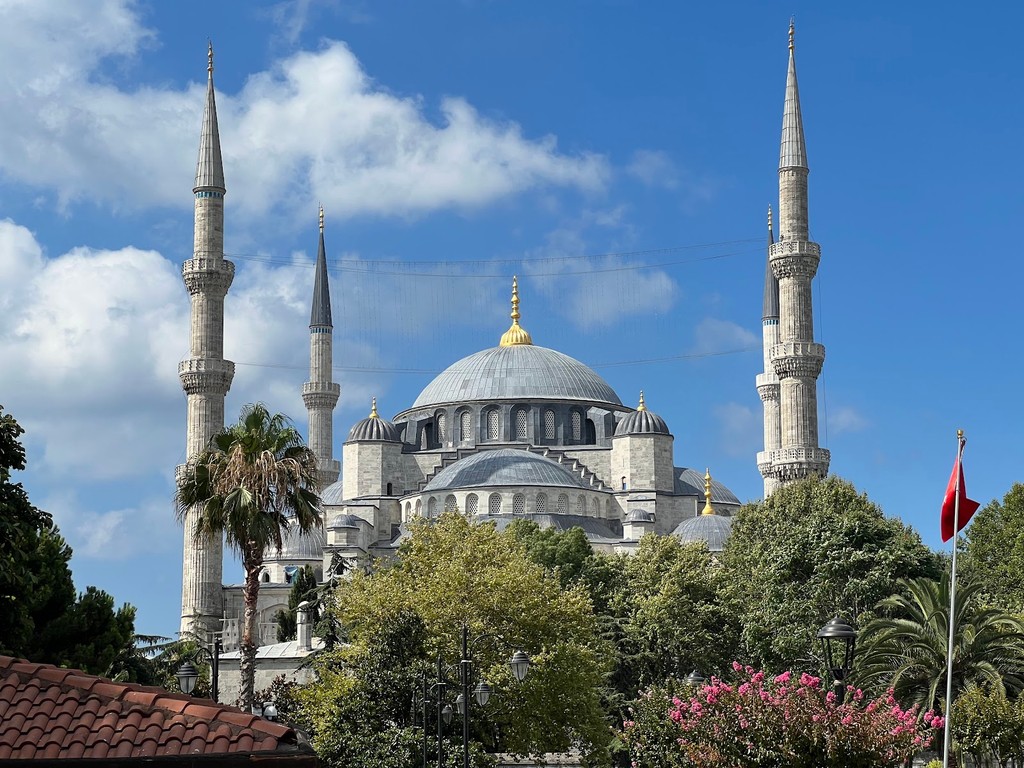
Blue Mosque (Sultan Ahmed Mosque) (Source: Google Maps)
The Blue Mosque, or Sultan Ahmed Mosque, is a masterpiece of Ottoman architecture, renowned for its stunning blue tiles that adorn its interior. Built in the early 17th century, this mosque was commissioned by Sultan Ahmed I and is famous for its six minarets and grand dome, which beautifully complements the nearby Hagia Sophia. The mosque's design incorporates both Byzantine and Islamic architectural elements, creating a harmonious blend that captivates visitors. Inside, the vast prayer hall is illuminated by cascading light from its many windows, enhancing the serene atmosphere. The Blue Mosque remains a functioning place of worship, welcoming thousands of visitors daily, and stands as a symbol of Istanbul's rich cultural heritage and religious significance.
Basilica Cistern
A quick walk from the Blue Mosque, the Basilica Cistern is an ancient underground water reservoir, known for its mysterious ambiance and Medusa head columns.
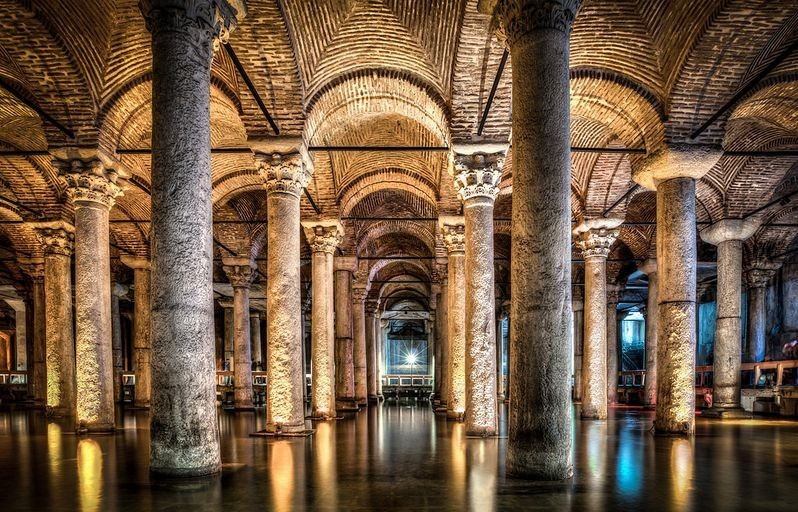
Basilica Cistern (Source: Google Maps)
The Basilica Cistern, built in the 6th century during the reign of Emperor Justinian I, is an ancient underground water reservoir that once supplied water to the Great Palace of Constantinople. This remarkable structure features a forest of 336 marble columns, many of which were repurposed from older buildings, creating a hauntingly beautiful ambiance. The cistern's most famous features are the two Medusa heads that serve as column bases, each with unique carvings. The cistern's cool, mysterious atmosphere has inspired countless stories and legends, making it a fascinating stop for visitors. Today, it serves as a reminder of the engineering prowess of the Byzantine Empire and offers a unique glimpse into the city's layered history.
Hagia Sophia
Just a short walk from Sultanahmet Square, the Hagia Sophia stands as a magnificent testament to Byzantine architecture and a symbol of Istanbul's diverse religious history.
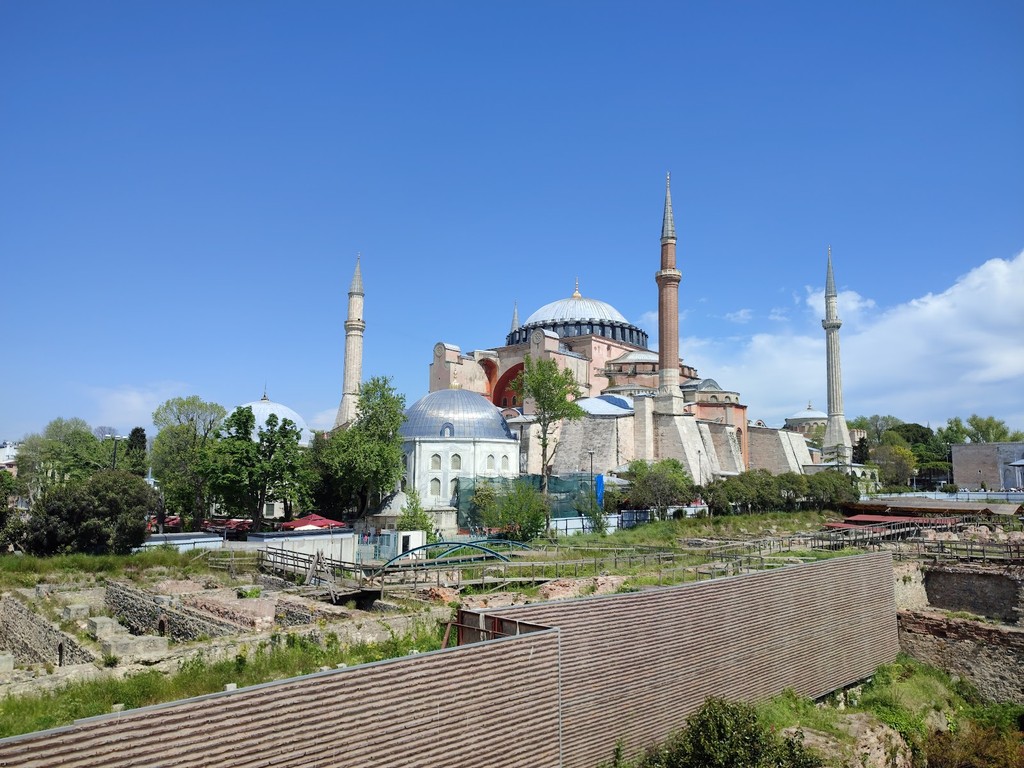
Hagia Sophia (Source: Google Maps)
Hagia Sophia, originally built as a cathedral in the 6th century, is a stunning architectural marvel and a symbol of Istanbul's diverse religious history. Designed by the renowned architects Anthemius of Tralles and Isidore of Miletus, it was the world's largest cathedral for nearly a thousand years. The structure is famous for its massive dome, which seems to float above the central nave, and its breathtaking mosaics that reflect both Christian and Islamic art. After the Ottoman conquest in 1453, Hagia Sophia was converted into a mosque, and later, in 1935, it became a museum, showcasing its rich history. Recently, it has been reconverted into a mosque, continuing to draw millions of visitors who come to admire its grandeur and historical significance.
Topkapi Palace
A short stroll from the Basilica Cistern, Topkapi Palace offers a glimpse into the opulent lifestyle of Ottoman sultans with its beautiful gardens and imperial treasures.
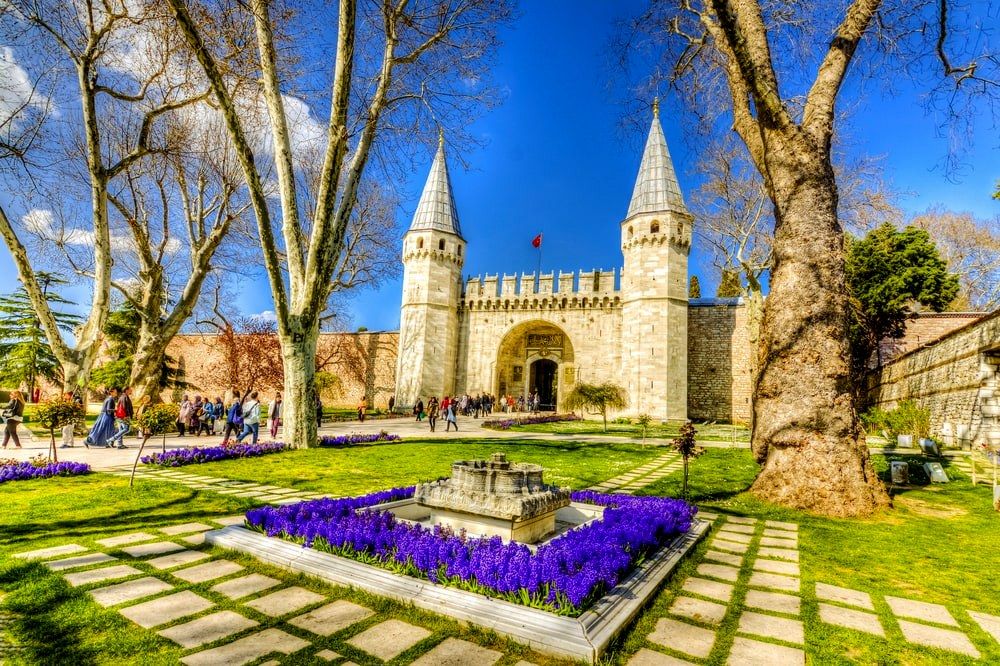
Topkapi Palace (Source: Google Maps)
Topkapi Palace served as the primary residence of the Ottoman sultans for nearly 400 years, housing the imperial family and their court. Constructed in the 15th century, the palace is a stunning example of Ottoman architecture, featuring intricate tile work, lush gardens, and impressive courtyards. Within its walls, visitors can discover a wealth of artifacts, including the Prophet Muhammad's cloak and sword, royal jewels, and manuscripts. The palace complex offers a glimpse into the opulent lifestyle of the sultans, with rooms designed for various functions, from administrative affairs to leisure. The Harem section, where the sultan's family resided, is particularly intriguing, offering insights into the lives of women in the Ottoman court. Today, Topkapi Palace is a UNESCO World Heritage site and a must-see for anyone interested in Istanbul's rich history.
Istanbul Archaeological Museums
Situated near Gülhane Park, these museums house an impressive collection of artifacts, offering insights into the rich history and cultures of the region.
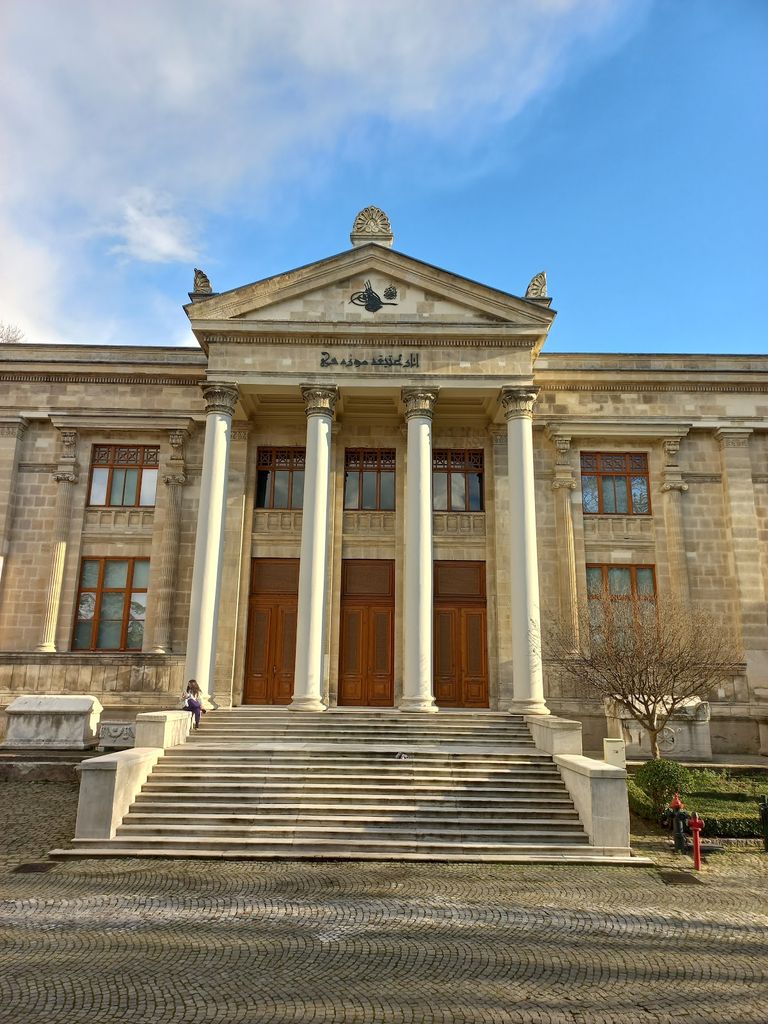
Istanbul Archaeological Museums (Source: Google Maps)
The Istanbul Archaeological Museums comprise a complex of three museums that house an extensive collection of artifacts from various civilizations that have thrived in the region. Established in the late 19th century, the museums showcase items from ancient Greece, Rome, and the Byzantine Empire, providing invaluable insights into the historical and cultural development of Istanbul. Highlights include the Alexander Sarcophagus, which is intricately carved and believed to belong to a Macedonian king, and the ancient artifacts from the nearby site of Troy. The museums are a treasure trove for history enthusiasts, offering a glimpse into the everyday lives of ancient peoples through their art, tools, and inscriptions. The Istanbul Archaeological Museums serve as a testament to the city's rich and diverse heritage, making them an essential stop for visitors.
Gülhane Park
Adjacent to Topkapi Palace, Gülhane Park provides a peaceful retreat with lush greenery, perfect for a leisurely walk or a quick rest.
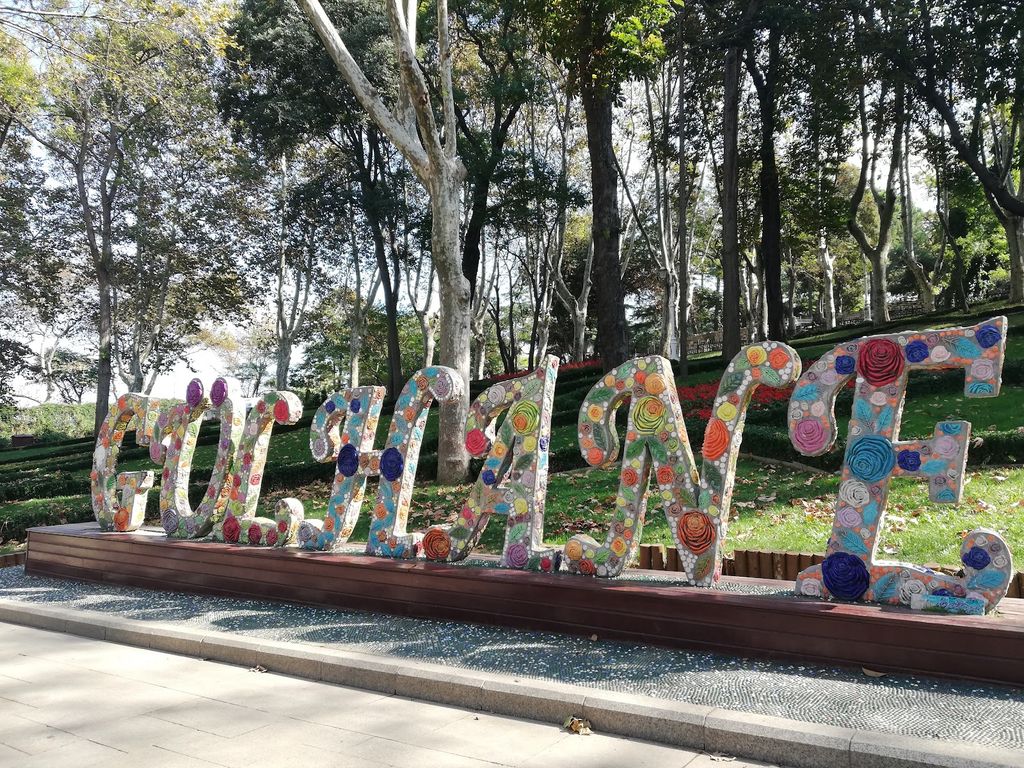
Gülhane Park (Source: Google Maps)
Gülhane Park, once part of the Topkapi Palace grounds, is one of the oldest parks in Istanbul, providing a serene escape from the bustling city. Established in the 19th century, the park is adorned with beautiful trees, flower beds, and walking paths, making it a popular spot for both locals and tourists. The park's name translates to 'Rosehouse,' reflecting its historical significance as a garden of roses. Visitors can enjoy leisurely strolls, picnics, or simply relax amidst the lush greenery. Gülhane Park offers stunning views of the Bosphorus and the Golden Horn, adding to its charm. Its proximity to major attractions makes it a perfect place to unwind after exploring the city's rich history, providing a peaceful oasis in the heart of Istanbul.
Spice Bazaar (Mısır Çarşısı)
A delightful 10-minute walk from the museums, the Spice Bazaar is a sensory feast of vibrant spices, sweets, and local delicacies, reflecting the city's trading heritage.
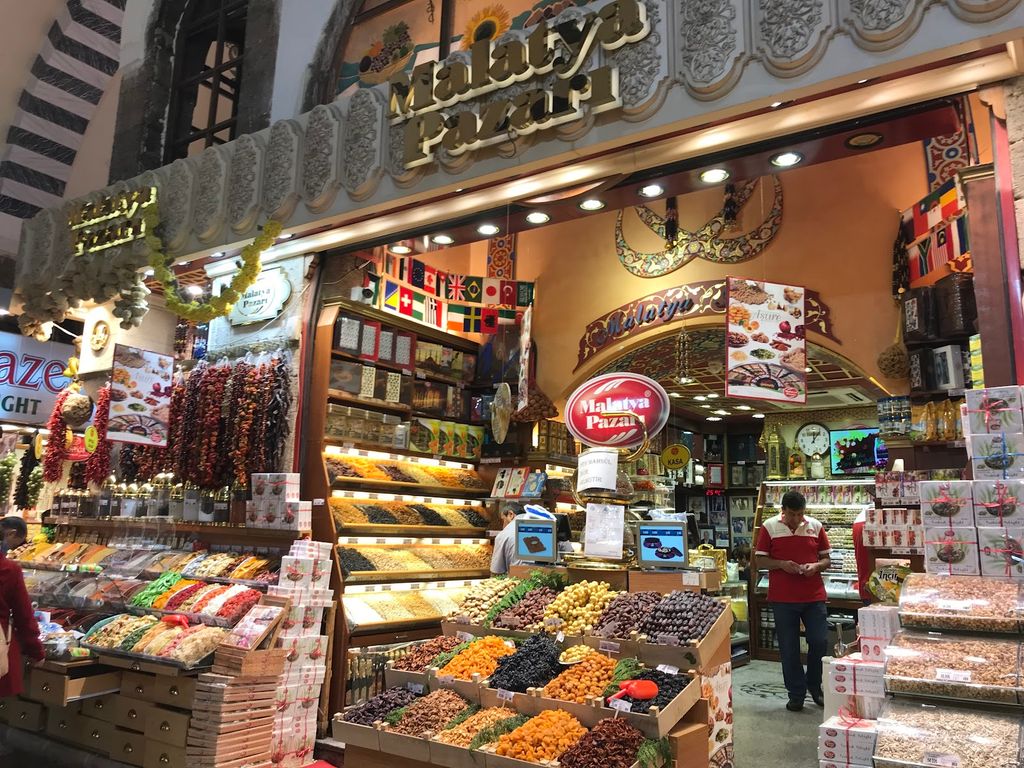
Spice Bazaar (Mısır Çarşısı) (Source: Google Maps)
The Spice Bazaar, known as Mısır Çarşısı in Turkish, is one of Istanbul's most vibrant and aromatic markets, dating back to the 17th century. Originally built to provide a steady supply of spices to the Ottoman Empire, the bazaar has evolved into a bustling hub of commerce, offering a delightful array of spices, herbs, sweets, and local delicacies. As you wander through its narrow aisles, the colorful displays and enticing aromas create a sensory feast that captures the essence of Istanbul's trading heritage. The bazaar is not only a marketplace but also a cultural experience, where visitors can engage with local vendors and sample traditional Turkish delights. The Spice Bazaar is a must-visit for anyone looking to immerse themselves in the flavors and aromas of Istanbul, reflecting the city’s rich culinary tradition.
Yeni Cami (New Mosque)
Located next to the Spice Bazaar, the Yeni Cami is an architectural gem with its elegant domes and minarets, showcasing the grandeur of Ottoman mosque design.
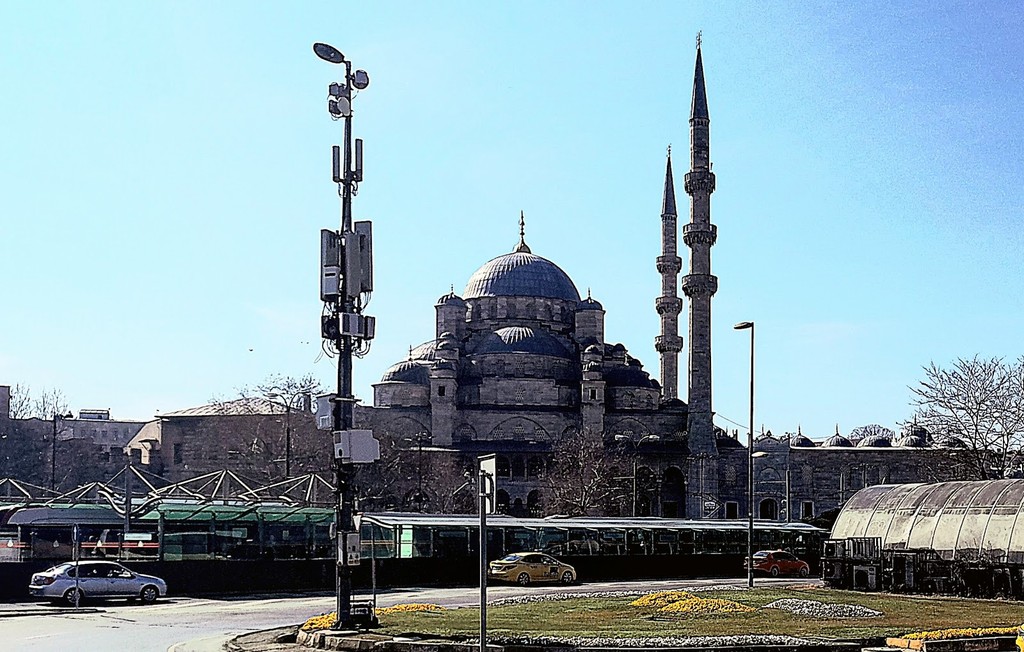
Yeni Cami (New Mosque) (Source: Google Maps)
Yeni Cami, or the New Mosque, is an architectural gem located near the Spice Bazaar, completed in the 17th century. It is one of the most important mosques in Istanbul, showcasing the grandeur of Ottoman mosque design with its impressive domes and elegant minarets. The mosque features a stunning interior adorned with intricate tile work, calligraphy, and chandeliers, creating a serene atmosphere for worship. The New Mosque was built to honor Valide Sultan Turhan Hatice, the wife of Sultan Ahmed I, and serves as a testament to the contributions of women in the Ottoman Empire. Its strategic location by the Golden Horn makes it a popular stop for visitors, offering breathtaking views of the waterway and the bustling life of the city. Yeni Cami remains an active place of worship, welcoming both pilgrims and tourists alike.

Your travels, your rules.
Create your own Free Walking Tours.
Set your preferences, distances and anything you want to do or see.
Completely free, no payment required.